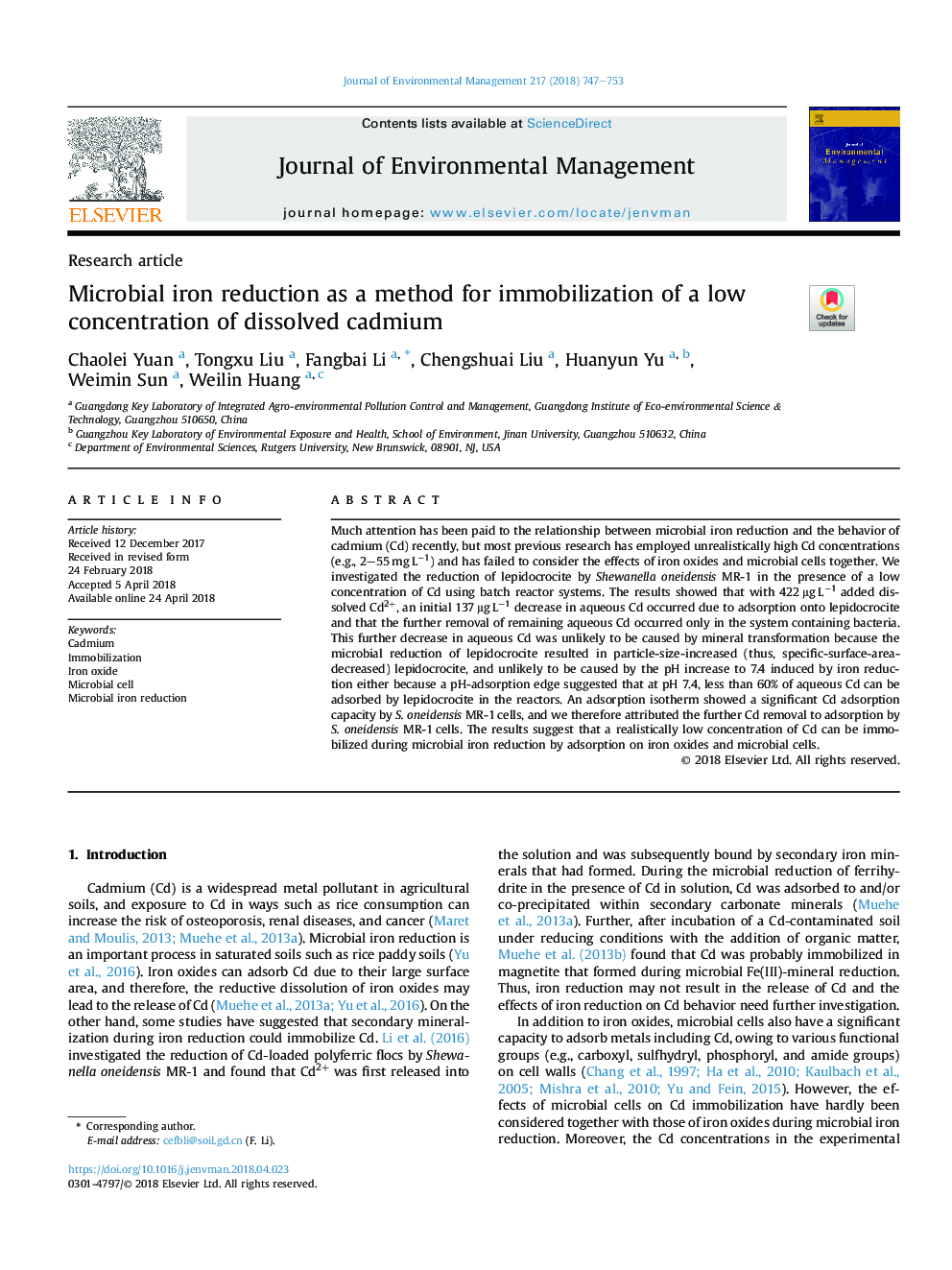| Article ID | Journal | Published Year | Pages | File Type |
|---|---|---|---|---|
| 7477769 | Journal of Environmental Management | 2018 | 7 Pages |
Abstract
Much attention has been paid to the relationship between microbial iron reduction and the behavior of cadmium (Cd) recently, but most previous research has employed unrealistically high Cd concentrations (e.g., 2-55â¯mgâ¯Lâ1) and has failed to consider the effects of iron oxides and microbial cells together. We investigated the reduction of lepidocrocite by Shewanella oneidensis MR-1 in the presence of a low concentration of Cd using batch reactor systems. The results showed that with 422â¯Î¼gâ¯Lâ1 added dissolved Cd2+, an initial 137â¯Î¼gâ¯Lâ1 decrease in aqueous Cd occurred due to adsorption onto lepidocrocite and that the further removal of remaining aqueous Cd occurred only in the system containing bacteria. This further decrease in aqueous Cd was unlikely to be caused by mineral transformation because the microbial reduction of lepidocrocite resulted in particle-size-increased (thus, specific-surface-area-decreased) lepidocrocite, and unlikely to be caused by the pH increase to 7.4 induced by iron reduction either because a pH-adsorption edge suggested that at pH 7.4, less than 60% of aqueous Cd can be adsorbed by lepidocrocite in the reactors. An adsorption isotherm showed a significant Cd adsorption capacity by S. oneidensis MR-1â¯cells, and we therefore attributed the further Cd removal to adsorption by S. oneidensis MR-1â¯cells. The results suggest that a realistically low concentration of Cd can be immobilized during microbial iron reduction by adsorption on iron oxides and microbial cells.
Related Topics
Physical Sciences and Engineering
Energy
Renewable Energy, Sustainability and the Environment
Authors
Chaolei Yuan, Tongxu Liu, Fangbai Li, Chengshuai Liu, Huanyun Yu, Weimin Sun, Weilin Huang,
